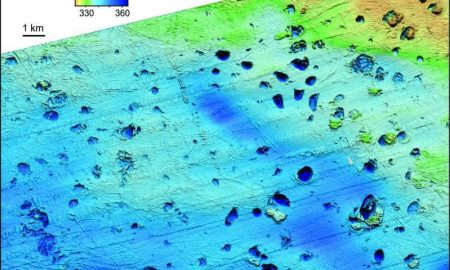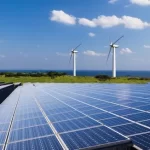June 6, 2017 – When during the 1990s, exploration of the Barents Sea revealed hundreds of large pockmarks on the sea floor, researchers were initially puzzled. What could have caused these features? Now a new study published in the journal Science, indicates widespread release of methane gas (CH4) from melting hydrates.
It appears that the last glaciation event exposed much of the sea floor which was covered by the ice sheets. Concentrations of hydrocarbons were effectively sequestered under the ice and as the glaciers began to melt, some 12,000 years ago, mounds of methane hydrate deposits emerged. These mounds were destabilized by the isostatic rebound of the sea floor as it rose with the weight of ice no longer pushing it down. Added to this, the warming Barents Sea further eroded the mounds containing the methane hydrates which, once destabilized, exploded. The result, giant craters on the sea floor, some as large a kilometer (0.6 miles) in diameter. The study further revealed that in the present there are still 600 active CH4 seeps fueled by ocean floor fractures that act as conduits for subterranean gas deposits to migrate upward.
The research was done by Norwegian scientists from the CAGE Centre for Arctic Gas Hydrate, Environment, and Climate. In an interview with the journal Nature, Karin Andreassen, the lead author of the study, states, “the principle is the same as in a pressure cooker: if you do not control the release of the pressure, it will continue to build up until there is a disaster in your kitchen…..I think it was probably like a lot of champagne bottles being opened at different times.”
What is not known is where the CH4 ended up? Was it absorbed by the oceans or did it have an impact on the atmosphere causing a warming spike?
One cannot ignore two implications coming from the evidence presented in this research.
There are domes of frozen CH4 on the Arctic Ocean sea floor. Are we likely to see sudden eruptions from these as the ocean warms? And for the permafrost regions of the Northern Hemisphere, as it melts, will we witness similar releases of trapped CH4 buried under peat and decaying vegetation that will no longer be frozen? The evidence we already see in Siberia, Alaska, Canada, and the Scandinavian countries suggests we prepare for such events.















